"For Beginners" Just 4 easy steps to learn how to make clothes
I want to make my own clothes because the stores don't sell the clothes I want to wear!
But I don't know how to make them.
Have you ever thought so?
Actually, making your own clothes is easy and there are only four steps.
You can learn quickly and still make your own original clothes.
The author has worked in the textile industry for over 20 years, selling fabrics.
I receive a lot of feedback from customers about the creative and difficult aspects of making clothes.
Some of them even send us pictures of their creations when they are well done.
Based on such feedback from our customers, this article introduces simple steps for making clothes that anyone can do.
We have made it easy to learn the basic steps for making everyday clothing and how to choose fabrics.
Embark on a journey to create your own fashion.
Click here to visit our online store.
Table of contents
・What are the minimum tools needed to make clothes?
・Basic steps for making clothes
・Tips for success when making clothes for the first time
・How to choose fabrics when making clothes
・Don't worry about choosing the fabric. 5 recommended fabrics for making clothes
What are the minimum tools needed to make clothes?
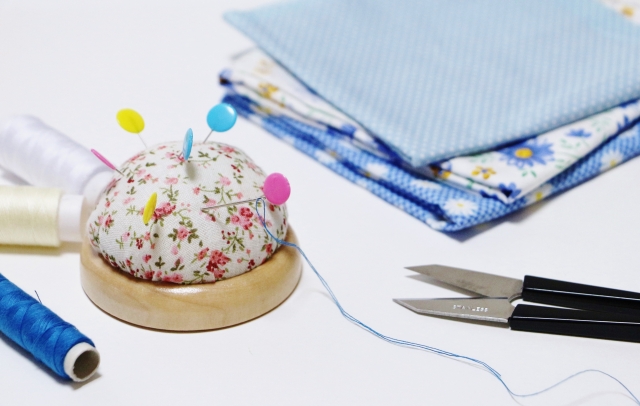
When working on a clothing project, having the right tools is one of the most important steps to success.
What are the minimum essentials for first-time or inexperienced garment makers?
I will explain the tools needed for each part of the clothing-making process.
Tools for cutting fabric
⚫︎ scissors or rotary cutter
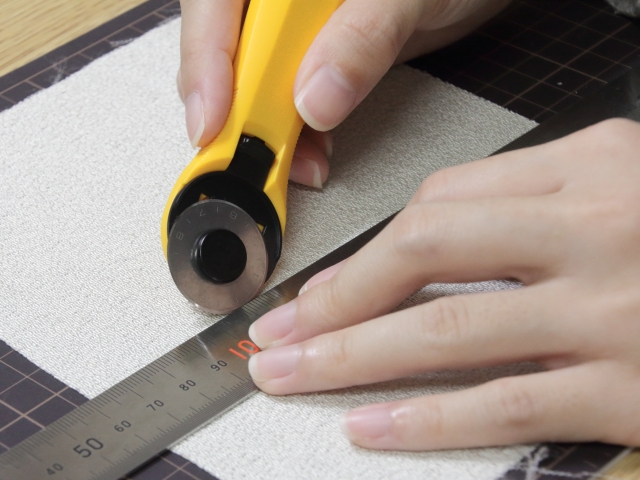
These scissors are truly for cutting cloth. They have a large handle and are easy to use with a clean cut.
They can be purchased at handicraft stores and major shopping malls.
Prices vary, but most are around $20.
Rotary cutters are also popular because they are easy to use and specialized for cloth cutting.
Once you get used to it, it is so easy to use that we often hear people say they have stopped using scissors altogether.
⚫︎ cutter mat
A mat to put under the rotary cutter when using it.
It is easy to use as it has a scale on it.
Various sizes are available, but larger ones (about 60 cm across) are recommended for ease of use.
⚫︎ rulers
Rulers are sold in a real variety of materials, looks, and lengths.
⚫︎Sewing pin
A needle used to fasten fabrics and patterns.
ailor's chalk
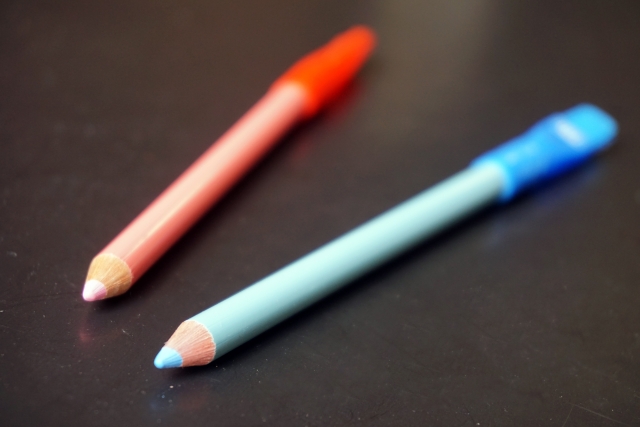
These pens are used to write lines and marks to be cut.
There are many different types of chaco pens to choose from.
Recommendation,
- Pen-type pens
- Easily erasable with an eraser
- Colors that stand out and are opposite to the color of the fabric
Tools for sewing
⚫︎ Sewing Machine
There are three main types of sewing machines: household sewing machines, commercial sewing machines, and lock sewing machines.
If you just want to make simple clothes as a hobby, one "home sewing machine" is enough.
If you also have a lock sewing machine, it is convenient because it can prevent threads from fraying.
However, if you don't have one, you can use a household "zigzag stitch" as a substitute.
⚫︎ Ironing
Used for weaving seam allowance and attaching a core.
A small household iron will suffice. Don't forget to prepare an ironing board at the same time.
⚫︎ Sewing Needles
Used when you have an area you want to hand sew.
⚫︎Pincushion
A tool to safely store many needles.
Embroidery scissors
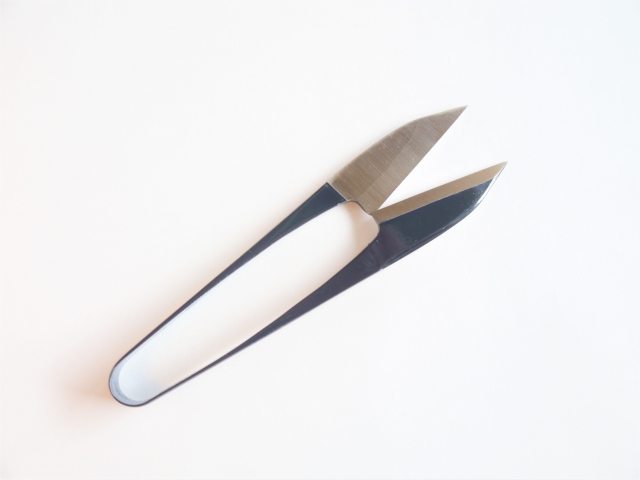
These are small scissors used for cutting and unraveling threads.
Basic steps for making clothes
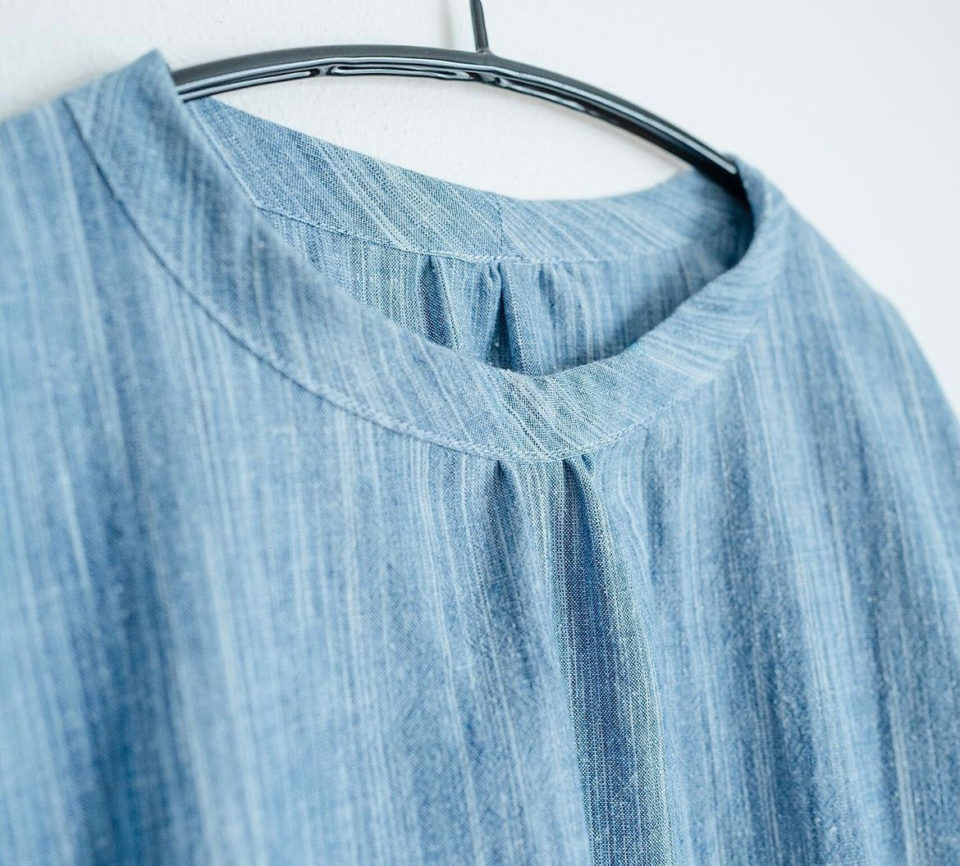
First of all, for those who are making clothes for the first time, I will explain the basic flow from fabric to finished garment.
1. Prepare the pattern
2. Prepare the fabric
3. Cutting
4. Sewing with a sewing machine
These are the only four major steps.
Moreover, you only need to move your hands for only three parts, except for "preparing the fabric.
Prepare the pattern

There are two main ways to obtain pattern paper, either by purchasing it or creating your own.
In the case of purchase, it is very easy and ready to use by simply cutting it out.
It can be purchased at craft stores or online.
If you want to make your own, you can usually trace the pages from a sewing or tailoring magazine.
There are also many free patterns available on the Internet, so it is possible to download and use them.
For example, if you search on the image collection site "Pinterest," you can find patterns for each item.
Instead of using the pattern paper as it is, trace the lines on "brown paper" and copy it.
Brown paper is a transparent paper made of Japanese paper or non-woven cloth, generally about 39 inches wide and 7.6 yards long.
It is stored curled up, so it is easier to use if it is flattened by rolling it the other way.
Place a piece of hatron paper on top of the patterned paper and secure it with a paperweight or other weight to prevent it from moving.
It is not a difficult process because you just copy the transparent lines with a pencil.
If the pattern paper does not have a seam allowance written on it, take an extra 1 to 1,5 cm.
Prepare the fabric
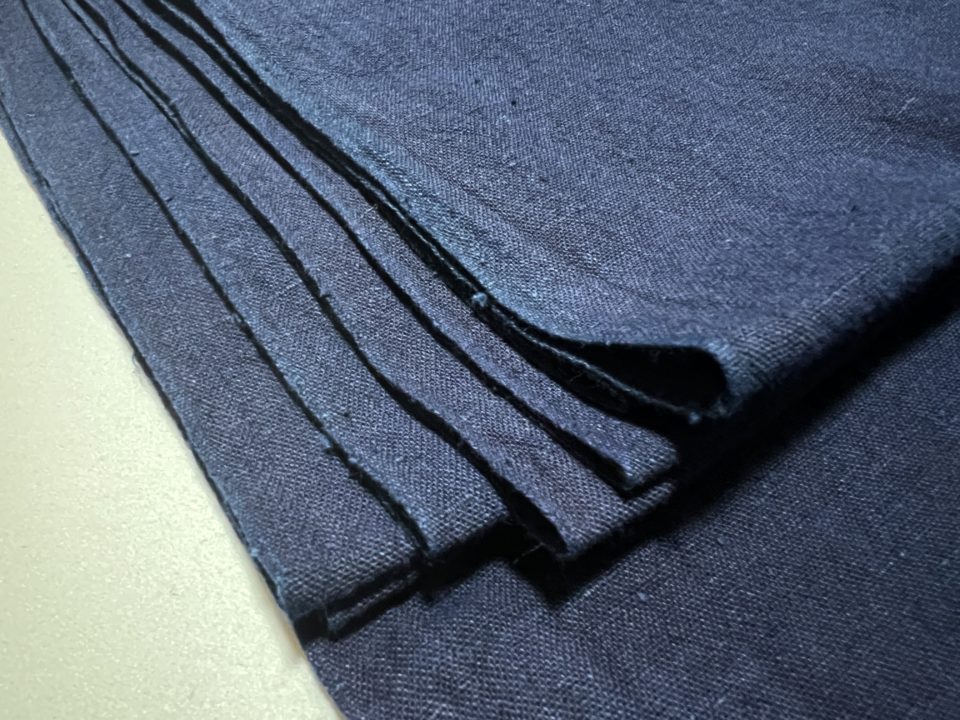
The first step is to decide on the fabrics that would be suitable for the clothes you want to make.
Some fabrics may not be suitable for the clothes you want to make, so you need to be careful.
A variety of fabrics are sold at handicraft stores.
There is probably one major handicraft store or a privately owned store in every area.
Also, these days, you can find a really large variety of fabrics on the Internet.
Some stores even allow you to order samples in advance, which is very helpful.
In addition, you may be able to buy in small quantities, which is one of the many unique features of online sales.
When making clothes, you need to know the length of fabric needed.
When making a garment from a dressmaking book, it is convenient to know the approximate measurement.
However, if you make your own paper pattern or purchase fabrics in advance, you need to know the measurement in advance.
The following is the standard measurement for each item. (Fabric width 35.4 inches to 55inches)
One-piece dress: 2 to 3 yards
Sleeved tops: 1.5 to 2 yards
Skirts 1.5 to 2.5yards
Pants 2-3yards
The length of the fabric will vary depending on the design and size.
Cutting

This is the process of matching the pattern you have created to the fabric and cutting along the seam allowance lines.
You may find it a little difficult at first, but you will get used to it as you go along.
The process will go smoothly if you proceed in the following order!
1. Secure a large space and spread out the fabric.
2. Iron any folds in the fabric.
3. Place the patterned paper and fix it to the fabric with a sewing pin so that it does not move.
4. Draw the pattern with a ailor's chalk.
5. If there is no seam allowance on the pattern, leave an extra 1 to 1.5 cm seam allowance.
6. Cut with one hand, the tip of the blade will float, so hold the other hand firmly.
If you want to add pockets, you need to mark them on the fabric.
Basically, just follow the information on the pattern.
Sewing with a sewing machine
Most home sewing machines are equipped with features that allow you to sew clothes to last, including
- straight stitch
- Zigzag stitch (function to repair frayed threads)
- Turnstitch (another feature to prevent fraying)
- Buttonhole (function to open a hole through which a button is threaded)
However, if you want to improve the quality of your work, or if you want it to look more like a ready-made product, a lock sewing machine will give you a more beautiful finish, while a zigzag stitch can be used to deal with frayed edges.
If you start sewing without lowering the hold down, the fabric will go this way and that, making it difficult to sew in a straight line.
It is also important to adjust the tension of the upper thread so that the seam is formed in the center of the fabric thickness.
It is best to use a dial to adjust the tension of the upper and lower threads so that the tension of the upper and lower threads are the same.
Tips for success when making clothes for the first time
When making clothes for the first time, some people may be worried about whether or not they will be able to do it well.
Here are some tips that will help even beginners avoid mistakes and successfully make clothes.
By being aware of these things, your work will go more smoothly and your chances of success will increase.
- When making clothes for the first time, choose simple, basic designs over complex patterns.
- Choose fabrics that are easy to handle and aren't slippery, such as cotton or linen.
- Check the seam allowance carefully and take the seam allowance into consideration when sewing using a sewing machine.
- Try sewing before the actual production
- Read the steps written on the pattern carefully and work in order.
- By ironing the seam allowances and seams, the finish will be much better.
Please keep trying without fear of failure.
How to choose fabrics when making clothes
When making clothes by hand, choosing the type of fabric and pattern is probably the most exciting moment.
The fabrics you choose and the patterns you use form the basis for making clothes and are reflected in the finished product.
However, it is quite difficult to find the best one among the many options.
In this section, I will explain the characteristics of fabrics and the effects of patterns in an easy-to-understand manner from a fabric store's perspective, and provide advice to help even beginners make the best choice.
Generally speaking, fabrics are broadly divided into ``material'' and ``pattern.''
Choosing the right fabric for the clothes you are making is directly connected to the ease of making and the finished product.
Choose by material
COTTON
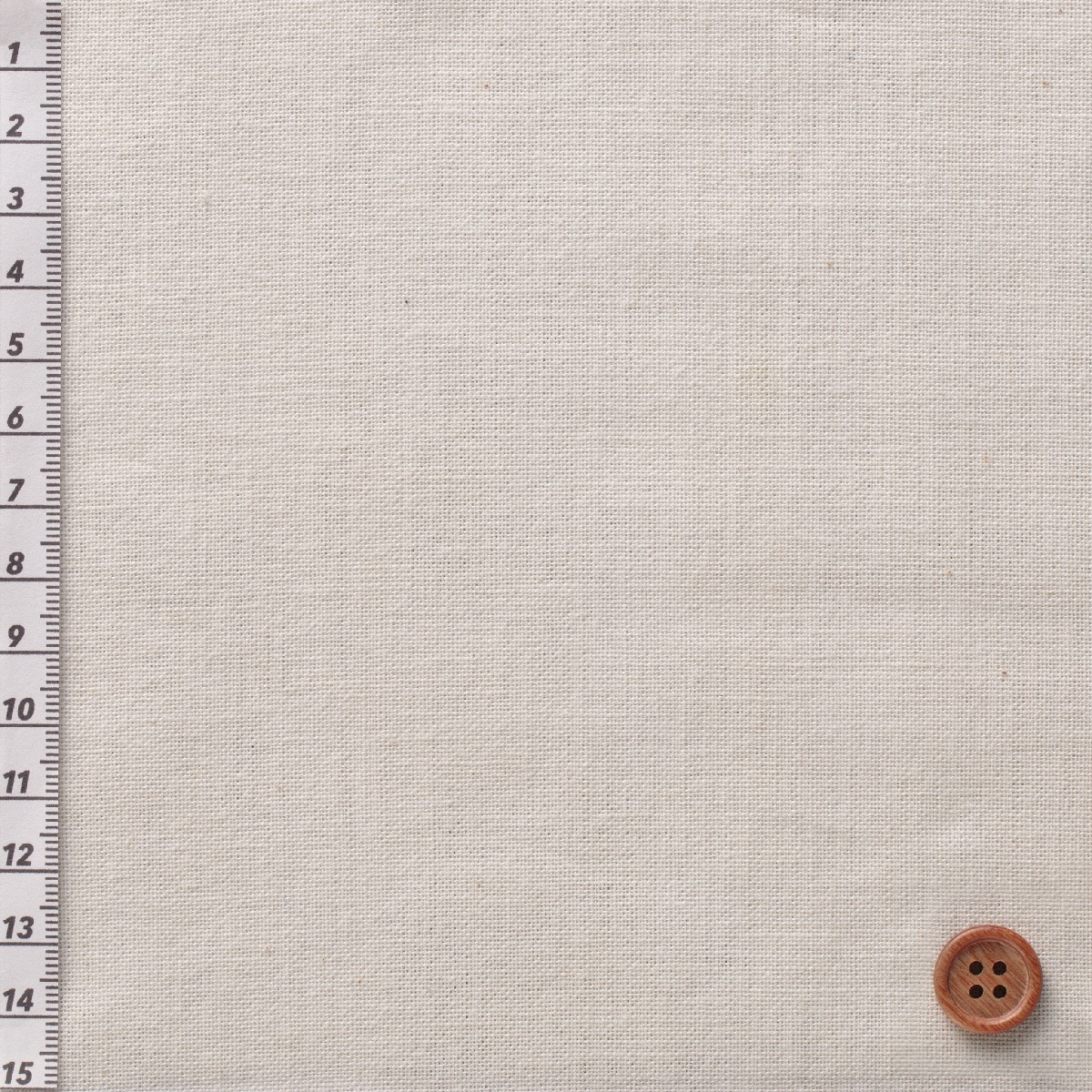
It is a natural fiber with excellent water absorbency and breathability, and is gentle to the skin.
It is widely used from baby underwear to adult clothing.
It is the most commonly used standard material, very easy to handle, and recommended for beginners!
It goes well with everyday clothes such as dresses and blouses.
It is also reasonably priced and can be washed at home.
However, it also has the disadvantage of being wrinkled easily.
LINEN
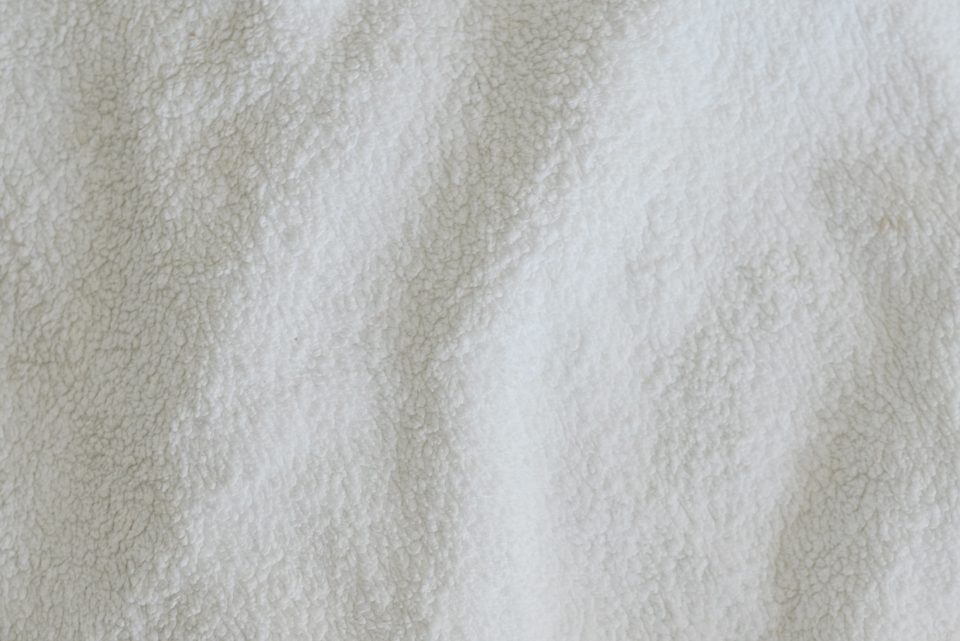
It is a natural material that will adapt to your skin the more you use it, allowing you to enjoy the change in texture.
It has excellent breathability and heat retention, making it comfortable to use all year round.
Although it is a fluffy and light fabric, it becomes more durable when it gets wet.
Another great feature is that it doesn't get dirty easily, keeps clean and lasts a long time.
Recommended for easy-to-wear tunics, dresses, and aprons for everyday use!
This material is suitable for straight stitches, so it is easy to use even for beginners.
SILK

It is a natural fiber obtained from the cocoons of silkworms, and is an elegant material with a pearl-like luster.
It is made of the same protein as human skin, so it has the advantage of not causing skin irritation.
It also has properties such as absorbing ultraviolet rays and being less likely to generate static electricity.
On the other hand, you need to be careful about the disadvantages that it is weak against friction and the fabric is easy to tear.
Since the material is slippery, it may be a little difficult for beginners to handle.
Once you get used to making clothes, this is a material you will definitely want to use.
Suitable for loose-fitting clothes such as loungewear and pajamas.
WOOL
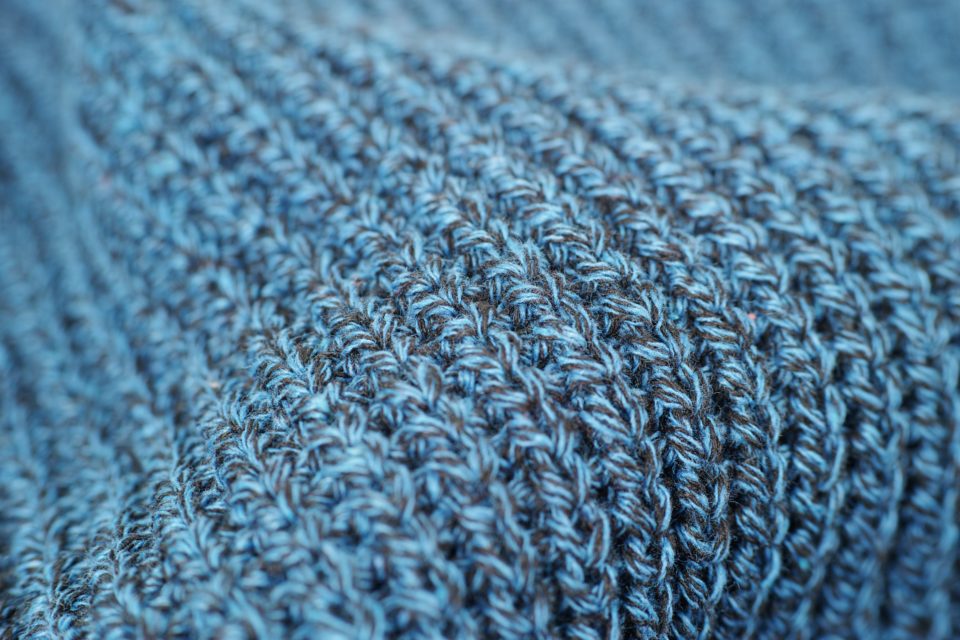
Among natural fibers, wool is an animal fiber obtained from the hair of sheep.
Wool is the best heat-retaining fiber and is often used in fall and winter clothing.
It is also characterized by its elasticity and wrinkle resistance.
Therefore, we recommend making it into an outer coat.
However, if this is difficult, it may be a good idea to start with something easy to wear over the top, like a poncho coat.
Please note that there are disadvantages such as the fabric being somewhat weak and being susceptible to insects.
Choose by pattern
SOLID

Plain colors are the most used because of their simplicity and versatility.
Plain fabrics are the foundation of clothing making, and can be used alone or combined with other patterns.
For beginners, the big advantage is that sewing mistakes are less noticeable and there is no need to match patterns.
I recommend starting with a plain color.
In addition, solid colors go well with embroidery, appliqué, buttons, etc., making it easy to customize your design.
Suitable for both casual and formal wear, it can be used for a wide range of purposes, from blouses to dresses.
STRIPES

Stripes are characterized by narrow stripes arranged vertically at equal intervals.
Regular patterns bring a uniform design to clothing.
Recommended for various items such as shirts, pants, skirts, dresses, ties, etc.
Thin stripes give a casual look, while thick stripes give a more formal look.
However, when cutting, it is necessary to consider the direction of the stripes and be careful to ensure that the patterns line up.
It is also suitable for partial use such as shirt chest pockets and pants pockets.
GINGHAM
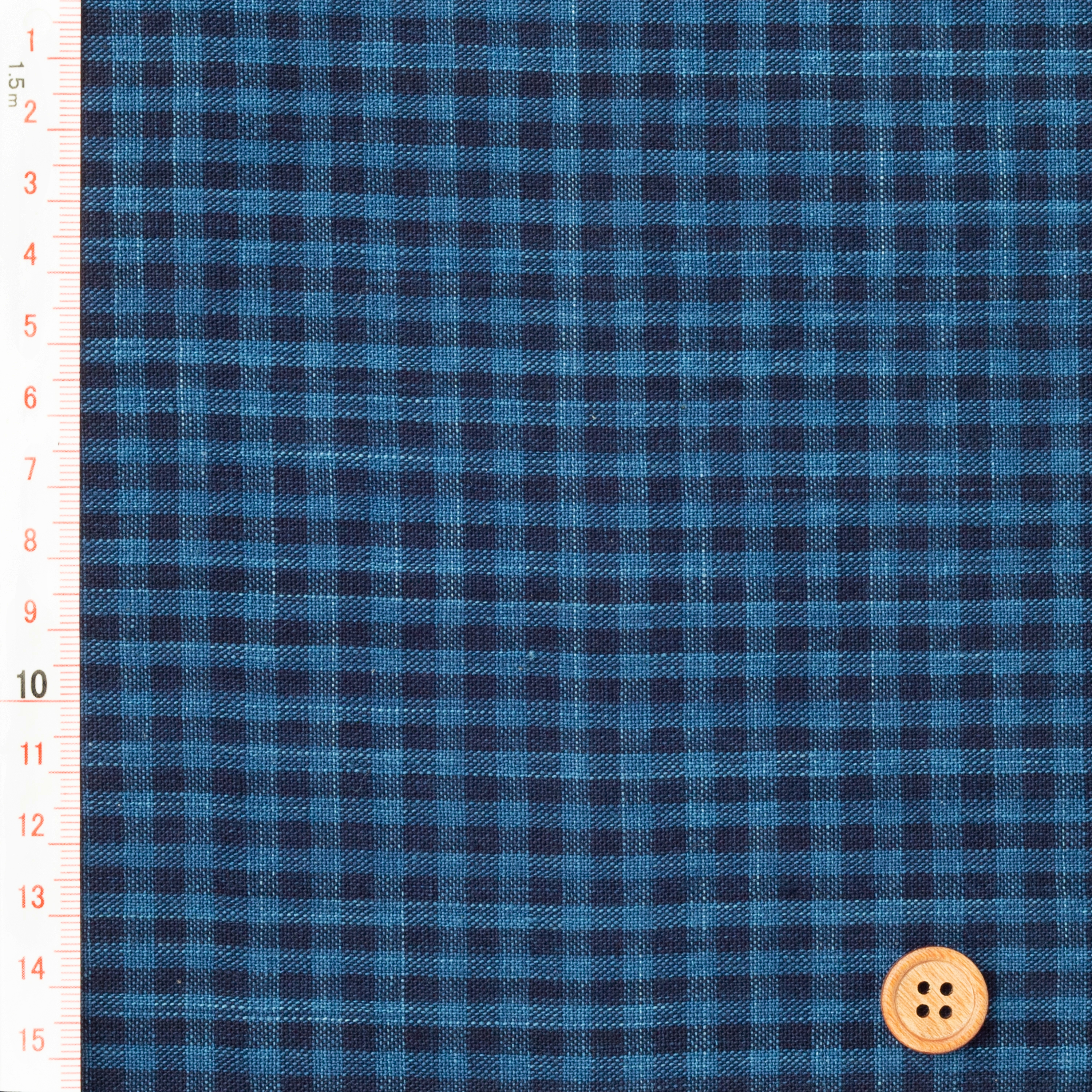
Gingham is a consistent pattern with alternating squares of two colors.
Basically, it consists of a combination of white and one other color.
It has a refreshing and light feel and is especially popular in spring and summer.
Recommended for sewing long skirts, pants, summer dresses, aprons, etc.
It is also popular for children's clothing because of its cute patterns.
PRINTING
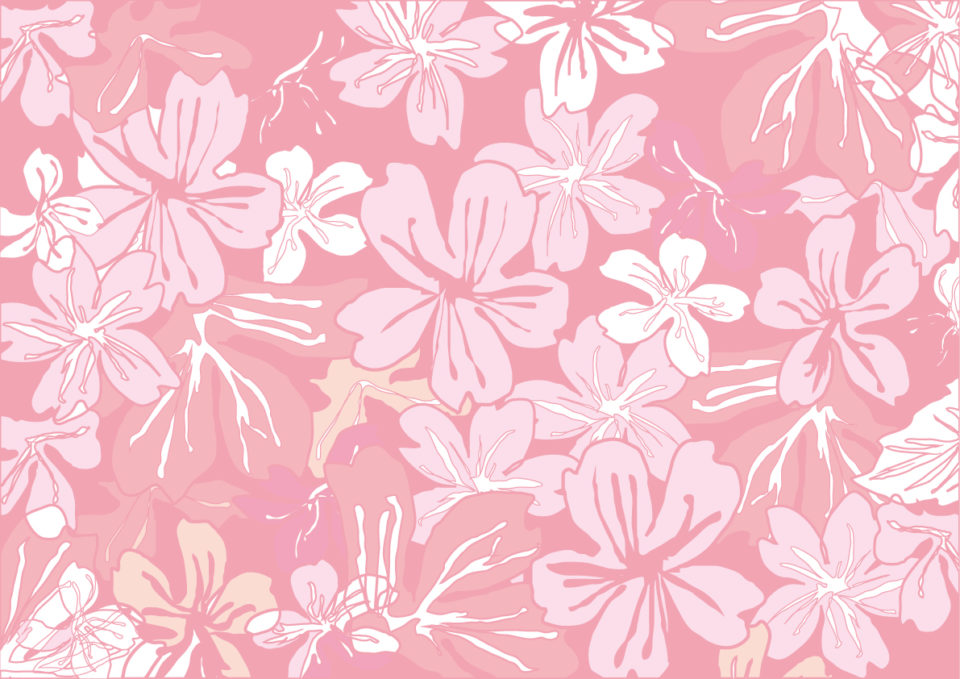
Printed patterns are relatively cheap and easy to purchase at local craft stores.
With a wide variety of patterns, you can create unique and attractive items.
Many of them have vivid and bright patterns, which bring vibrancy to handmade items.
Another great thing is that you can choose the material and design according to the season.
You can choose from materials such as cotton, linen, silk, and polyester.
Colorful printed fabrics are often used in children's clothing.
Of course, it is also suitable for items worn by adults, and can be used for a variety of purposes such as dresses, blouses, pajamas, and shorts.
It is perfect for practice and is easy to handle even for beginners.
Don't worry about choosing the fabric. 5 recommended fabrics for making clothes
When making clothes, choosing the right fabric for the purpose is the key to success.
However, the variety of fabric options can be overwhelming.
Therefore, we have selected carefully recommended fabrics for making clothes, and we will introduce five of them below.
These fabrics can be used by a wide range of users, from beginners to experts, and no matter which one you choose, you should be able to create your own unique item.
|
Recommend use |
Fabric characteristics |
Fabric |
|
|
Shirts, Blouse, Dress |
Light and durable, the appearance changes depending on the angle |
100% cotton |
|
|
From sporty to casual aprons |
Bright and clean, smooth to the touch |
100% cotton |
|
| Shirts, jackets, skirts, T-shirts, cut-and-sew |
A popular pattern that is loved by a wide range of people from casual to formal. |
100% cotton |
|
| Short-sleeved shirts, dresses |
Has a unique surface texturing that is well ventilated and wrinkle-resistant |
100% cotton |
|
| Cotton hemp crepe | Dress, Pajamas | Thin, light and fluffy It feels refreshing |
50% cotton & 50% hemp |
1. Chambray
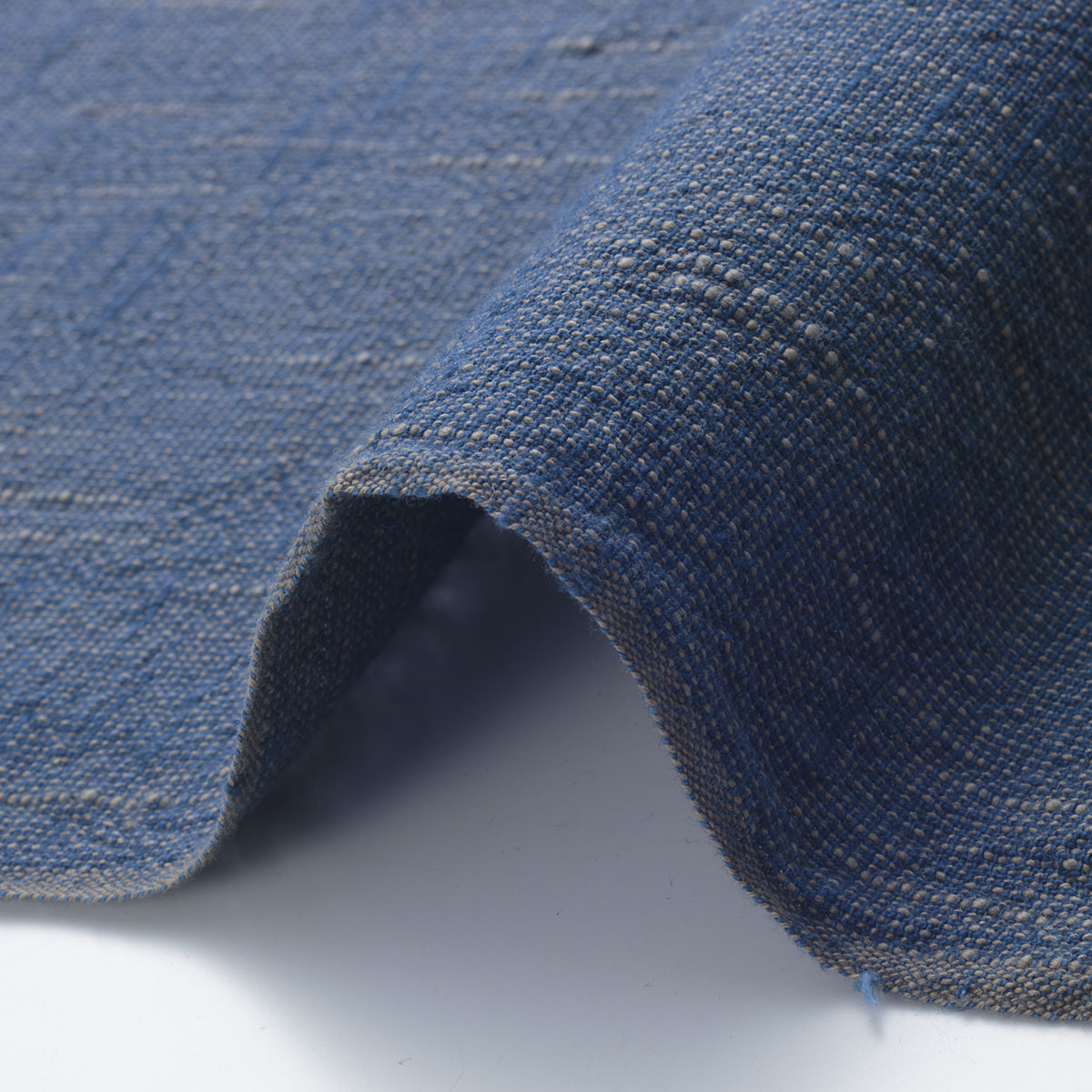
A plain weave, 100% cotton fabric woven using different colored threads for the warp and weft.
It is characterized by its color and appearance changing depending on the angle of light, and it has a similar feel to denim.
However, it is not as thick as denim, so it is suitable for tops such as shirts, blouses, and dresses.
Chambray is typically blue in color and is one of the fabrics frequently used by apparel manufacturers.
The reason why it is in demand is because of its good texture and its light and durable texture.
It has excellent breathability and is a versatile material that can be used almost all year round.
2. Gingham check
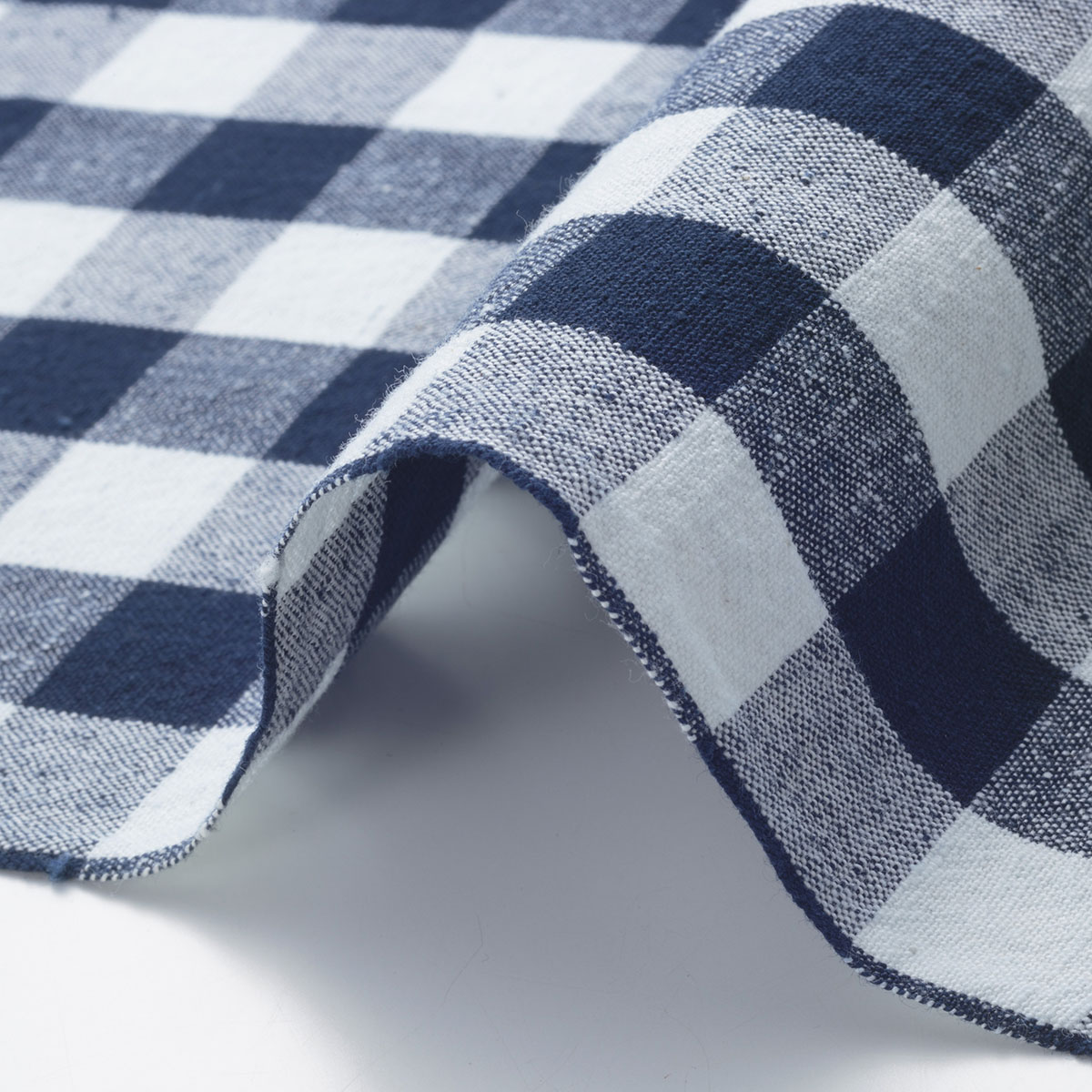
A 100% cotton plain weave fabric with a refreshing checkered pattern consisting of white and one other color.
It is said that it was given this name because it was woven in the Guingamp region of France.
It is lightweight, breathable, and absorbs sweat well, so it is used for sporty and casual items.
It also has a bright and clean feel, so it goes well with aprons, uniforms, and interior decorations.
With its smooth texture and soft texture, you can wear it comfortably regardless of the season.
Click here to view gingham check
3. Stripes
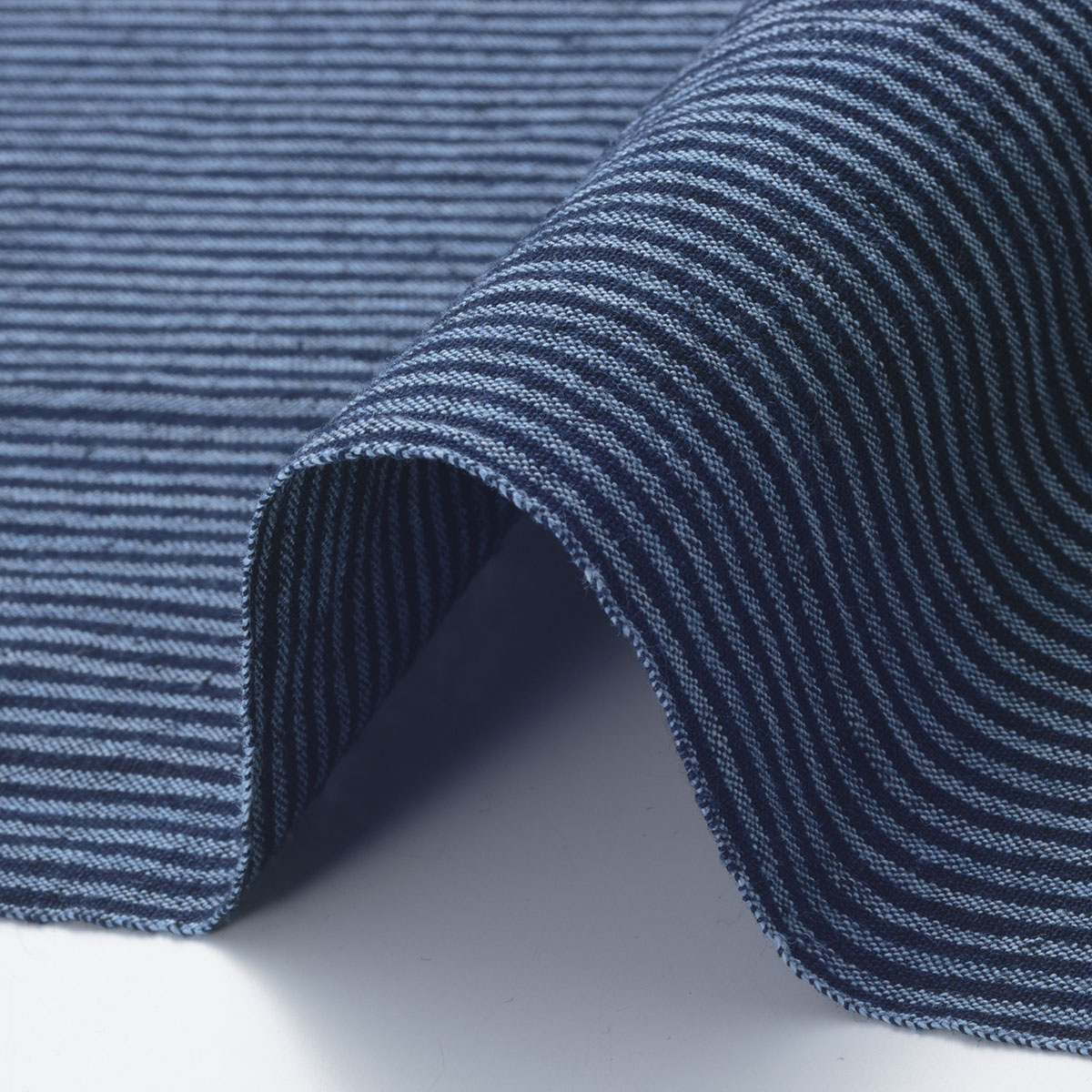
The general definition of stripe is to weave a "vertical striped pattern" using yarn dyed in two or more colors.
Made of 100% cotton fabric that is perfect for casual fashion, it has a refreshing impression and is a popular pattern that has been loved for a long time.
There are various stripes depending on the width of the stripes, the way they are woven, the arrangement of the stripes, and the use of colors.
For those who are new to making clothes, we recommend thin stripes for a more casual look.
It has a wide variety of uses, including shirts, jackets, skirts, T-shirts, and cut-and-sew items.
4. seersucker
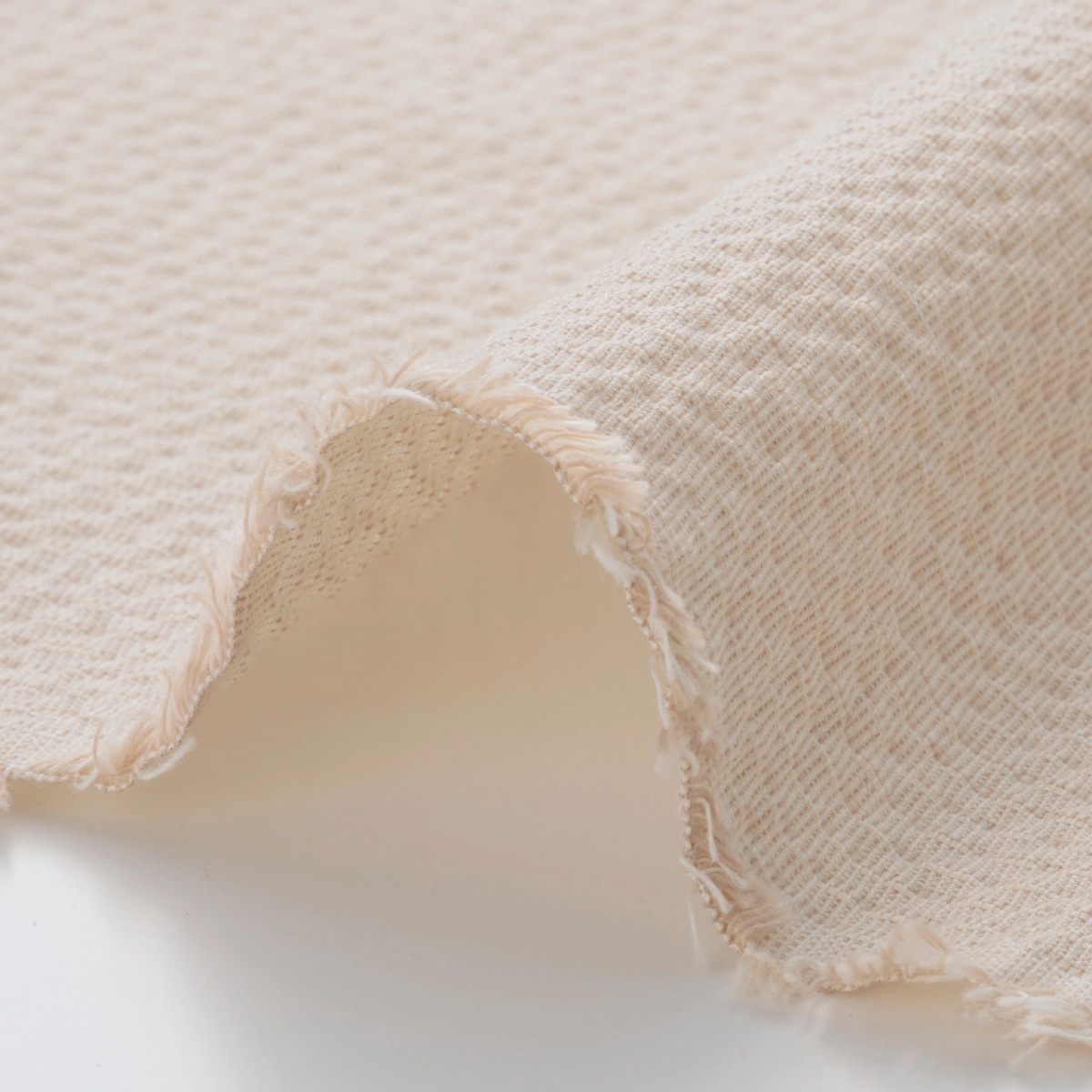
Shijira-ori is a 100% cotton fabric known as a summer material.
Its main feature is that it has a unique surface texturing (unevenness in the fabric).
This surface texturing prevents it from sticking to your skin even when you sweat.
It's breathable and wrinkle-resistant, making it extremely comfortable to wear.
This fabric has been used for kimonos and yukatas since ancient times, but it also goes well with casual clothes.
It would be great to wear a summer-like short-sleeved shirt, dress, or Japanese style jinbei.
5. Cotton hemp crepe
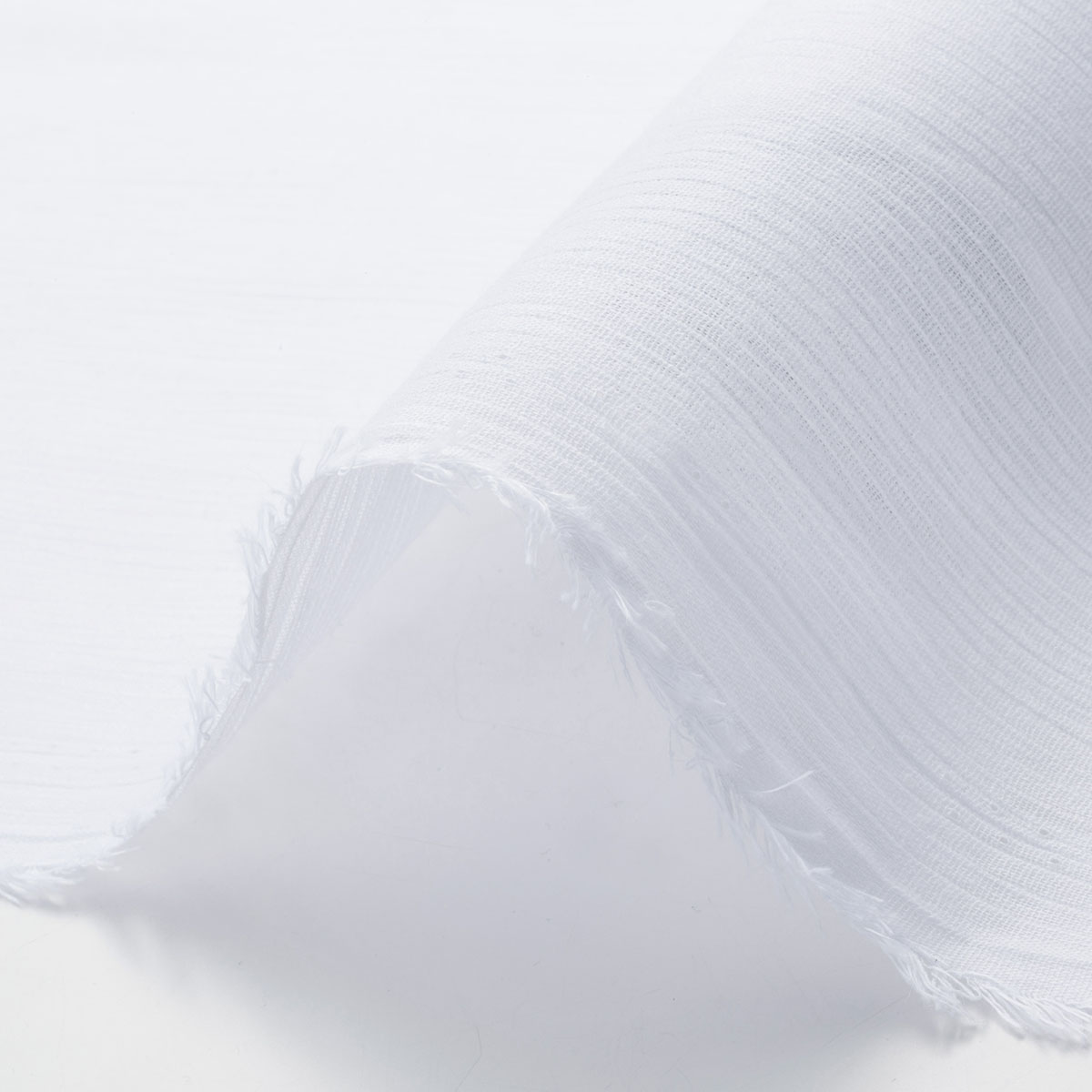
In recent years, shrinkage has been appearing on the fashion scene one after another and is popular among young people.
Its characteristics are that it absorbs sweat well, has a crisp feel, and dries quickly.
The threads are strongly twisted to create a grain (unevenness in the fabric) on the surface.
The fabric is thin, light, and fluffy, giving it a very refreshing feel.
Furthermore, this effect is further enhanced by using a ratio of 50% cotton and 50% hemp.
I recommend making it into a dress or pajamas.
Click here to view Cotton hemp crepe
Summary: Making clothes isn't difficult once you get the tips and steps!
Once again, in this article we introduced the following:
- Basic steps for making clothes
- The minimum tools needed to make clothes
- Guide to choosing fabrics and patterns
- Don't be confused when choosing fabric. 5 recommended fabrics for making clothes
I hope you've learned that making clothes isn't that difficult once you get the hang of it and the steps.
Finally, in addition to the five types of fabrics introduced above, we also have a wide variety of fabrics that are suitable for making clothes.
We also have fabrics unique to Japan, such as indigo dyeing.
If you are worried about purchasing fabric straight away, we also have samples available, so feel free to try them out.
I hope this article will help you fall in love with making clothes in the future.
